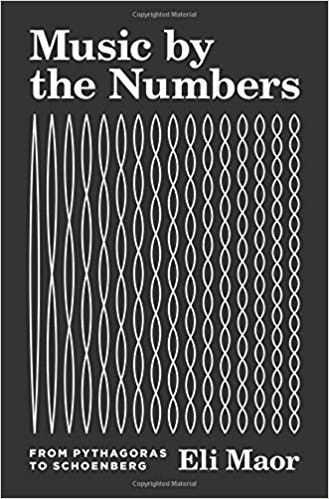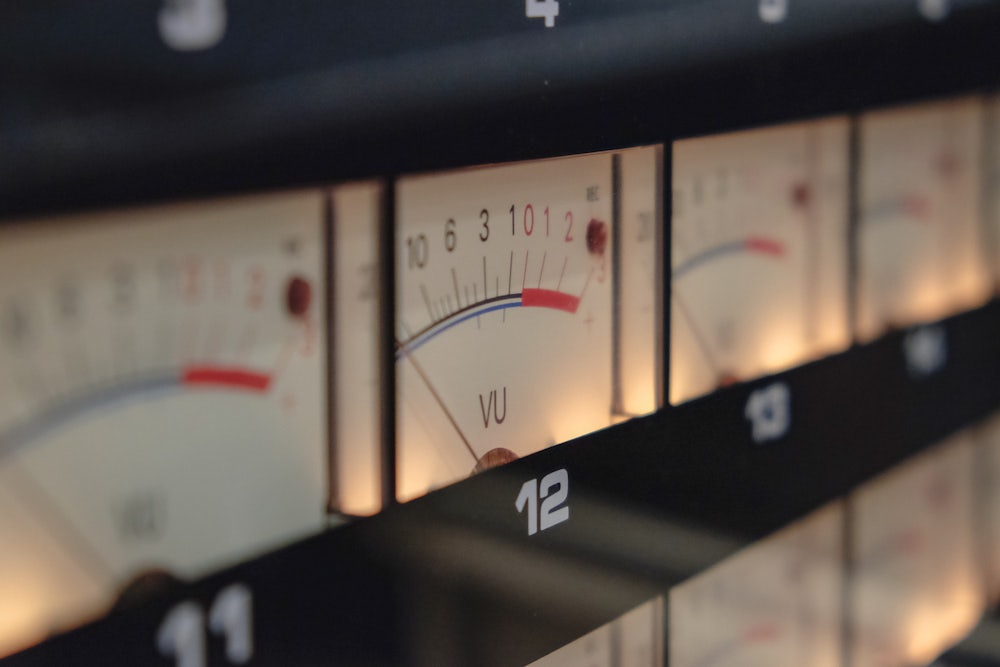By now it is commonplace to point out how much of our lives are subject to algorithms. The imperative to provide “analytics” for everything from financial portfolios to security risk, to work and shopping habits seems always on the verge of converting all of experience into some tidy table of figures. Arguments about where or whether we reach something human and unquantifiable typically end up invoking, more or less indignantly, aesthetic experience. Art, it is argued, is the place where analytics hit a wall.

The idea that works of art can be explained quantitatively (aside from quoting some dollar amount), might be caricatured in the description of, say, a Vermeer, by noting that it is a 17 7/8 inch high by 16 1/8 inch wide canvas, on which are arranged a certain combination of color-coded patches and flecks, followed by an account of the chemical processes at work when the pigments change as the picture suffers the ravages of time. Even if all of this turns out to be factually true, such a description leaves a lot out: the way (to take one of a potentially limitless set of examples) a milkmaid tilts a jug so that falling rivulets of milk are caught in a ray of late afternoon sunlight. What is left out, in short, is the experience of the painting. Measurement misses the point.
Music is more complicated, though, because it is fundamentally bound up with numbers. Even the most gushily emotive piece of music is animated by an explicable numerical substructure: The scales used to make melodies are subdivided into discrete intervals; these intervals may be stacked vertically in thirds and fifths and sevenths and ninths to create chords; and all of it unfolds over a sequence of metrical pulses. This isn’t just some high-flown abstraction. Composers derive structural and expressive ideas from this numerical DNA, allowing for the invention of new kinds of music. All this leads to puzzling questions about where the measure of music ends and where our experience of it begins.
The deep connection between music and math was already in place by about the sixth century BC when Pythagoras of Samos found that audible pitches could be expressed as numerical ratios. Go to a piano, hit a middle C and put your ear to the wood: You’ll hear an overtone resonating an octave above. It’s the same note twice as high—which means the ratio between tone and overtone is 2:1. For Pythagoras such overtones were the royal road to the truth that the world was made of numbers, and that “harmony” described not just relations between pitches, but the rational order of the cosmos itself.
In the nineteenth century, Pythagorean ratios were used to establish the basics of acoustics, the physics of sound. Hermann Ludwig Ferdinand von Helmholtz used graduated glass spheres to isolate overtones and show beyond a shadow of a doubt that they existed (until Helmholtz’s experiments there was some skepticism about the reality of overtones). As Eli Maor tells it in his limpid, lively history Music by the Numbers, Helmholtz invented and built an electrical contraption that could “combine several pure tones, each generated by a tuning fork driven by carefully timed electromagnetic pulses, to imitate the sounds of various musical instruments and spoken vowels—a precursor of the modern electronic synthesizer.” Indeed, when analogue synthesis came into vogue in the 1960s, it brought with it not just a new set of timbral colors but, for many, a crash course in acoustic science, as a glance at the control surface of any synthesizer will show, with its oscillators, filters, wave shapers and resonators.
The problem of measuring music may shed light on the question of where to draw the line between music and noise. If a tone, as Maor explains, “is generated by periodic vibrations that repeat themselves again and again with precise regularity, producing a sound with a definite recognizable pitch” then everything else is noise, characterized by “nonperiodic, random vibrations.” Hearing the tonal warp of a passing siren may be explained by the Doppler effect (change in the perception of a sound whose source is in motion). Yet it would be wrong to think that the siren sound in Erik Satie’s 1917 ballet Parade could be explained in the same way, since it’s part of the experience of a larger work. Something new has entered with Satie’s siren. It is hard to quantify just what exactly it is.
Pitch isn’t the only area where the difference between music and noise is hard to pin down: marking time—tempo—is also an essential part of music. But when does the marking of time turn into art? Is a ticking clock a piece of music? How about a series in which every third tick is accented? Maor offers a brief account of the invention of the metronome, a piece of technology for fixing and marking tempo and some of the ways in which this form of measurement has proved inspiring. While the prototype for the metronome was invented in 1814 by Dietrich Nikolaus Winkel, it is usually associated with Johann Maelzel (known for his amusing automata, among them a mechanical chess-player). His metronome was a hit with composers, among them his friend Ludwig von Beethoven who, caught in a rare whimsical mood, improvised a tune in honor of Maelzel’s machine. Later Elliott Carter would take the idea of variable tempo in his technique of “metric modulation” in which metronome markings are as fluid and variable as harmonies and pitches, making for a music of warping, Möbius Strip-like contortions.
The line between music and apparent noise has in fact been one of the central aesthetic controversies of twentieth century music. John Cage’s 4’33” comes to mind, in which any chance occurrence during a performance of the piece—a passing car heard through the walls, someone sneezing in the auditorium, the slamming shut of the piano—counts as part of the work. A more programmatic—and, depending on your point of view, aesthetically convincing—attempt to challenge ideas of what could be music was Arnold Schoenberg’s dodecaphonic system of serial composition. Schoenberg began as an expressionist composer, extending Wagner and Mahler’s innovations in extreme chromaticism, but later found a way to bypass tonality altogether. In serial composition one moves through all 12 tones in the “row” before beginning a new phrase, building up themes and motifs from that numerical constraint.
The controversy of Schoenberg’s serialist works—the overwhelming reaction to them as ugly, nightmarish, simply unmusical—shows how firmly tonality had come to condition habits of listening. It also points to a widespread dislike for composition that pushes music too close to its roots in mathematics.
All sorts of kooky ramifications and bits of weird trivia start popping up the more you look into the connections between music and math. The wiry undulations of the Slinky toy, for example, turn out to be good way of modeling sine waves. And what about the “lowest known musical note in the universe”? It turns out to be a tone emitted by the galaxy cluster Abell 426, 250 million light years away. Maor explains: “the cluster is surrounded by a hot gas at a temperature of about 25,000,000 degrees Celsius, and it shows concentric ripples spreading outward—acoustic waves. From the speed of sound at that temperature—about 1,155 kilometers per second—and the observed spacing between the ripples—some 36,000 light years—it is easy to find the frequency of the sound: about 3x10-15 Hz, which corresponds to the note Bb nearly 57 octaves below middle C.” (You’ll need to tack on 635 keys to the left side of a piano keyboard to find out what this sounds like).
In looking into the links between music and math, one can’t help feeling excited affection for the freewheeling curiosity of previous centuries, when savants played over broad arrays of disciplines like virtuoso keyboardists. The unfettered polymathic openness of a Helmholtz or a Schoenberg seems comparatively rare in our age of narrow expertise and stiflingly corporate “research programs.” This is not to mention the persistence of what C.P. Snow once called the Two Cultures, which still keeps the arts and the natural sciences at a tense, suspicious distance.
While the intimate link between music and math upsets the presumed schism between creative expression and disciplines like physics or engineering, it also dispels the idea that artworks (musical or otherwise) are in any true sense measurable. Musical works may be not “explained” numerically; there is a category mistake in the idea. For all the precision of descriptions of tones as formed from composites of overtones, or how the human ear is a natural acoustic prism, no amount of measure will capture just what it is about Bach’s Goldberg Variations that makes them drop dead gorgeous. (This is not to mention the difference between the piece as performed by one human being, say Karl Richter, and another, say Glenn Gould).
None of this is to suggest that we should not be interested in the connections between music and numbers. Those connections give one a peculiar and exhilarating taste in the head. It’s one you find in Martin Gardiner’s Scientific American columns on mathematical puzzles and in his annotations to Alice in Wonderland; in the French Oulipo collective who seek in numerical constraints ways of deriving novels and poems; in the “quasi-musical … poetico-mathematical” high Vladimir Nabokov got from composing chess problems; in the twisty, psychedelic speculations of Douglas Hofstadter’s Gödel, Escher, Bach. To spend time in this place is as good an antidote as any to the ubiquity of algorithms.
